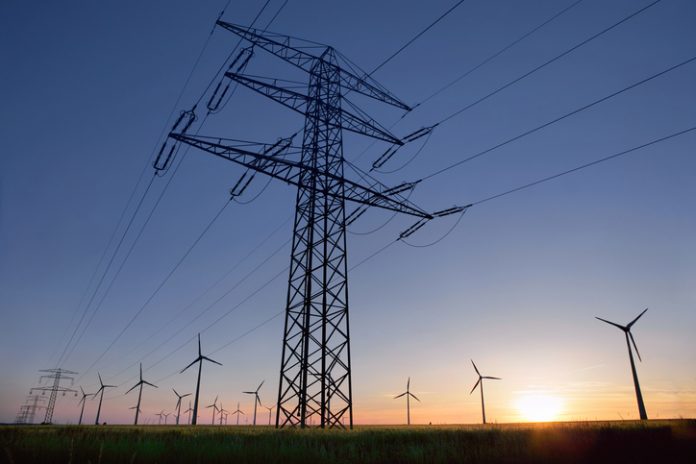A coalition of conservation groups and representatives of rural communities in New York lost a lawsuit against the newly created New York State Office of Renewable Energy Siting (ORES).
Plaintiffs had challenged the powers the new agency was granted to disregard laws and regulations intended to protect the environment in order to expedite the citing of industrial wind and solar projects.
In order to reach the goal of having 70 percent renewable energy by 2030, New York created ORES to handle the oversight of applications for renewable energy projects.
Suing to Uphold Environmental Laws
Plaintiff communities and groups filed a lawsuit in the State Supreme Court of Albany County, NY against ORES and the State of New York.
The suit asked for a stay on recent regulations created by ORES for industrial renewable energy plant siting.
The New York State Supreme Court dismissed the complaint in October, concluding some of the plaintiffs’ arguments lacked merit and that ORES technically hasn’t violated any laws because no specific project was referenced in the complaint.
Erosion of Local Rights
One argument the plaintiffs made was that ORES creation undermined the pre-existing State Siting Board, invalidating its authority to determine siting rules for power plants.
According to the complaint, ORES also violates the Constitution of New York, particularly the Home Rule provision.
Under Home Rule, local municipalities and counties have the authority to self-govern, and set their own local standards for environmental protection so long as they are not in violation of state laws.
State politicians dislike the rights municipalities have under Home Rule, using it to fight projects the state advocates for, says John Droz, founder of the Alliance for Wise Energy Decisions.
“New York being a Home Rule state means according to the state constitution, the towns are supposed to have more authority over their own governance.” Droz said, “However, state politicians don’t like this, because as the people and leaders of some towns become educated, they are resisting some of the political agendas of the state.”
Droz says New York is using the excuse of climate change to override Home Rule rights.
“The state is constantly trying to erode these rights, and they will use the climate issue to say that citizens don’t get a say because there are bigger fish to fry, ‘we’re talking about saving the world,’” Droz said.
Right to Destroy the Environment
Instead preparing an appropriate Environmental Impact Statement required under New York Conservation Law, the petitioners say, ORES issued a blanket statement that there would be no negative impacts on the environment whatsoever from proposed wind and solar projects.
“As a result, ORES issued a Negative Declaration of Environmental Significance (“Neg Dec”), i.e., a finding that its regulations would not have even one potential adverse impact on the environment, and refused to prepare an Environmental Impact Statement, in violation of SEQRA and the Environmental Conservation Law, 6 NYCRR Part 617.1,” said the petition.
In point of fact, industrial wind farms have numerous negative impacts on the local environment, says Droz.
“Numerous studies have shown wind energy is actually a detriment to the climate and environment,” Droz said, “There is no appropriate siting for something that doesn’t work.”
Little Problems Snowball
A second problem plaintiffs identified in their complaint was that ORES was granted the power to allow renewable energy companies to the local environment without recourse to block it under the law.
“ORES possesses the power to authorize renewable energy companies to clear large tracts of forest, level hilltops, degrade or destroy sensitive habitat, harm wildlife, kill birds and bats, waive local laws, interfere with continental scale bird migration, and eliminate vast acreage of farmland and agriculture,” the Plaintiff’s complaint says.
Although the court dismissed this claim as well, Droz says its well founded.
Industrial wind facilities create numerous harmful indirect economic harms, says Droz.
“The net impact of local wind developments may very well be an economic liability especially in agricultural areas.” Droz said, “Wind turbines kill bats in fairly significant numbers, bats have extraordinary economic value in several ways, one of which is that they are prodigious insect eaters. Larger volumes of insects are going to reduce agricultural yield.”
Internet Info
Town of Copake et al v. New York Office of Renewable Citing et al (State of New York Supreme Court) June 29, 2021, http://climatecasechart.com/climate-change-litigation/wp-content/uploads/sites/16/case-documents/2021/20210628_docket-905502-21_complaint.pdf.



























[…] of proposed VA wind projectInterior Department approves 2nd large U.S. offshore wind projectNY Supreme Court Dismisses Lawsuit Challenging Renewables Siting PoliciesOhio Commissioners Restrict County Wind and Solar […]
[…] NY Supreme Court Dismisses Lawsuit Challenging Renewables Siting Policies […]